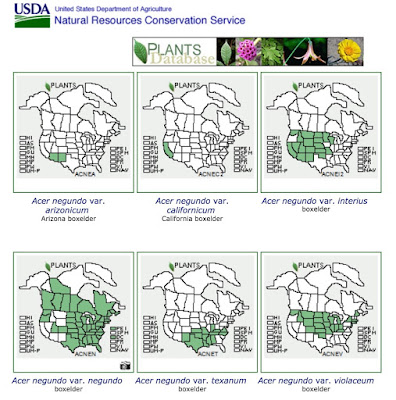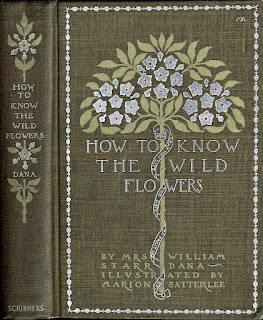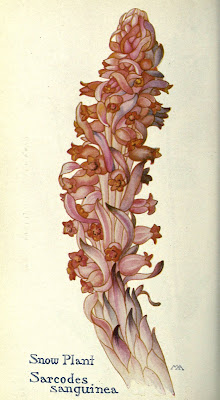Gypsum (calcium sulfate dihydrate, CaSO4·2H2O) is a common mineral generally found in evaporite beds associated with sedimentary rocks. Where it occurs in large quantities, it’s mined (2). It’s used mainly for plaster and drywall (aka sheet rock, wallboard), as well as other less common but important applications.
 |
|
Google Earth view of White Sands National Monument, New Mexico; note scale.
|
Then there’s the White Mountain dunefield five miles west-northwest of Meadow, Utah. It covers only 0.1 sq km, so there’s little risk of commercial development, though a great geologist—the first to describe the area—noted:
“Perhaps no gypsum deposit in the world is so easily exploited as this; it needs merely to be shoveled into wagons and hauled away.” GK Gilbert, 1890
 |
|
Google Earth view of White Mountain in the Black Rock Desert, Utah; note scale.
|
 |
|
GK Gilbert, “one of the greatest American geologists of the 19th century—a man who should be ranked with Lyell, Agassiz, and Smith” (National Academy of Sciences Archives photo, from Picard 2008).
|
From 1871 to 1879, Gilbert served as geologist on two of the Great Surveys of the American West, working for both Lt. George Wheeler and John Wesley Powell. He loved field work, in spite of (or maybe because of) the rigors of western exploration (3). He had a sharp and creative mind, and his contributions to geology are legendary, for example discovery of laccoliths, comprehensive description and mapping of Ice Age lakes, and development of some of the most basic concepts in geomorphology.
 |
|
Lake Bonneville (Gilbert 1890); added circle and arrow mark Sevier Body and White Mountain.
|
Gilbert spent much of his field time in western Utah and adjacent Nevada, ostensibly gathering practical information such as location of irrigable lands. But he also studied and mapped playas, relic shorelines and other features of Lake Bonneville—the basis for his great 1890 monograph. Near the southern end of the Sevier Body, he discovered a playa that “differs from all the others in that its material is gypsum.”
“It was ascertained by digging in the playa that a portion of the deposit is amorphous and another portion crystalline. One phase of the precipitation results in the formation of small free crystals, which the wind sweeps from the surface of the playa and gathers in dunes. The dunes do not travel to a great distance, but are arrested by a low rhyolitic butte near by, to which they have given the name of White Mountain.”
 |
|
Partial map, from Gilbert’s 1890 Lake Bonneville monograph.
|
The map above shows the southern part of the “Volcanic District near Fillmore, Utah” (today’s Black Rock Desert) with the playa of gypsiferous clay (GC, pale yellow) and crystalline gypsum (G, horizontal hatching). At the north end is White Mountain—rhyolite (R, red dots) and accumulations of gypsum sand (GS, vertical hatching).
 |
| Trail to top. |
 |
| White sand verbena, Abronia elliptica. |
 |
| Unknown travelers. |
White Mountain is underpinned by a “small” rhyolite dome that erupted about 400,000 years ago. Its actual size is unknown due to overlying Lake Bonneville sediments and basalt flows. The White Mountain rhyolite may be significantly more extensive below the surface, as blocks have been found in the Tabernacle volcanic field to the west, active just 12,000 years ago (Johnsen 2010).
 |
| View from White Mountain summit: lava flow and cinder cone, with Pavant Butte behind. |
 |
|
Enjoying a bit of shade provided by White Mountain rhyolite.
|
 |
|
Closer view, note layering … ??
|
“It is probable that the deposit is independent of any special chemical reaction, and is due simply to the discharge by evaporation of a mineral dissolved from the rocks. The streams whose waters occasionally flood the playa rise among strata of Jurassic and Triassic age, and such strata in a neighboring mountain range are known to be highly gypsiferous.”
 |
|
Grove Karl Gilbert c. 1910; USGS photo.
|
In my readings for this post, I learned that sometime before 1906, Gilbert met and fell in love with the great California botanist Alice Eastwood, probably on a Sierra Club outing. Plants and rocks—a wonderful match! In 1917, after a decade of "courtship," they made plans to marry the next year. Sadly, Gilbert died on May 1, 1918.
 |
|
Alice Eastwood next to “rift” from the 1906 San Francisco earthquake (Marin County, GK Gilbert photo; Archives of the California Academy of Sciences, see Aldrich et al. 2006).
|
Notes
(1) Previous Black Rock Desert posts include Volcanoes in Utah—how can that be?!, Sunstones at Sunstone Knoll and A Caldera Lake?
(2) Flue-Gas Desulfurization (FGD) gypsum now equals natural (mined) gypsum in wallboard manufacturing. FGD gypsum production utilizes emissions captured from fossil-fuel power plants. The product is chemically identical to natural gypsum, but with higher purity (more here).
(3) Ironically, Gilbert was a sickly child, and even at 20 was frail enough to be passed over in the Civil War draft. Apparently field work changed him dramatically.
Sources
Aldrich, ML, Leviton, AE, and Elsbernd, K. 2006. Grove Karl Gilbert’s photographs as evidence in geology: Documenting the 1906 San Francisco earthquake. PDF
Gilbert, GK. 1890. Lake Bonneville. Monographs of the US Geological Survey, v. 1. Available here.
Jenkins, MC. 2018 (January 8). Grove Karl Gilbert, ‘A Captain Bold’ National Geographic blog.
Johnsen, R, et al. 2010. Subalkaline volcanism in the Black Rock Desert and Markagunt Plateau volcanic fields, in Carney, SM, et al., eds., Geology of south-central Utah. Utah Geological Association Publication 39.
Picard, MD. 2008. Grove Karl Gilbert, master of laccoliths and lakes, in Profiles of Rocky Mountain geologists, a continuing series. Rocky Mountain Geology 43:111-118.
Sepp, Siim (Sandatlas). 2015. Gypsum sand.


















































